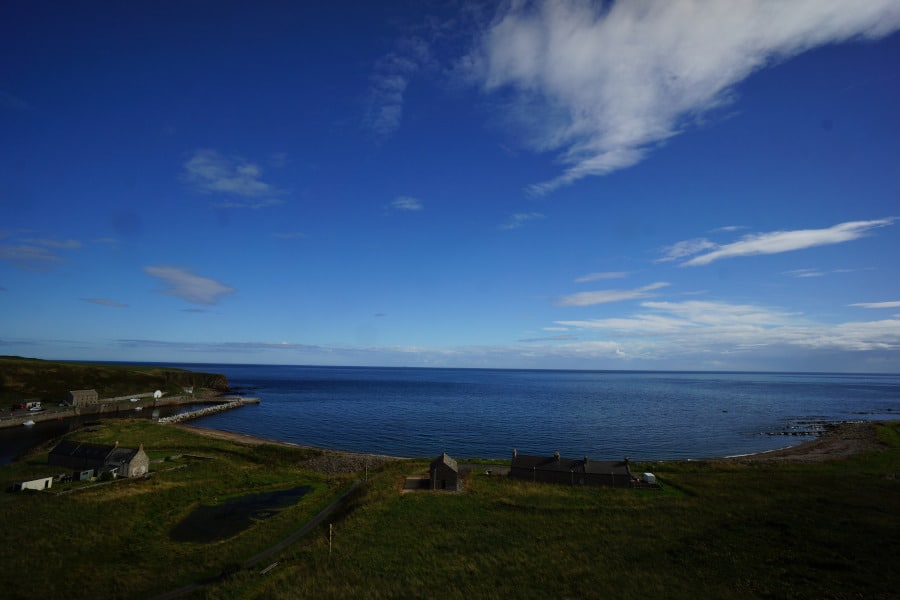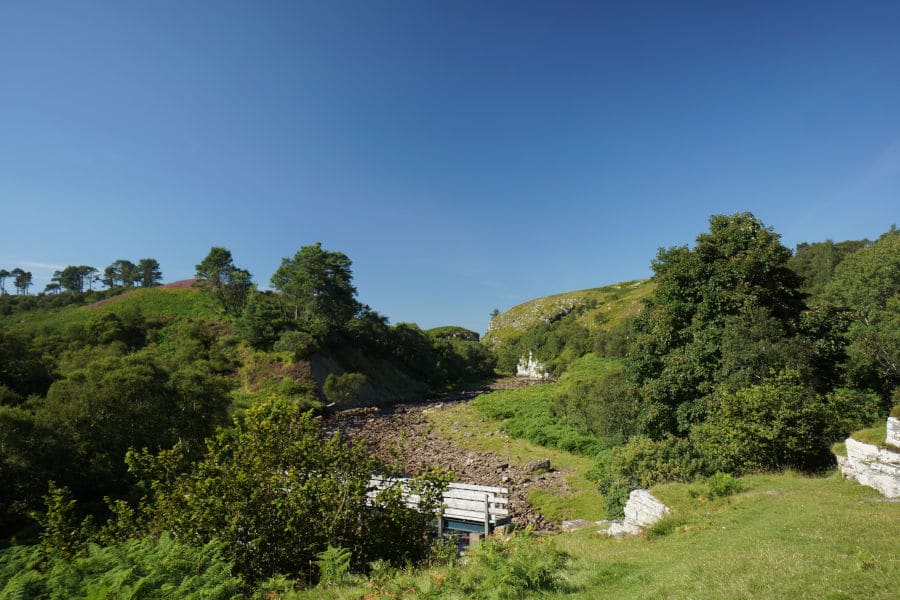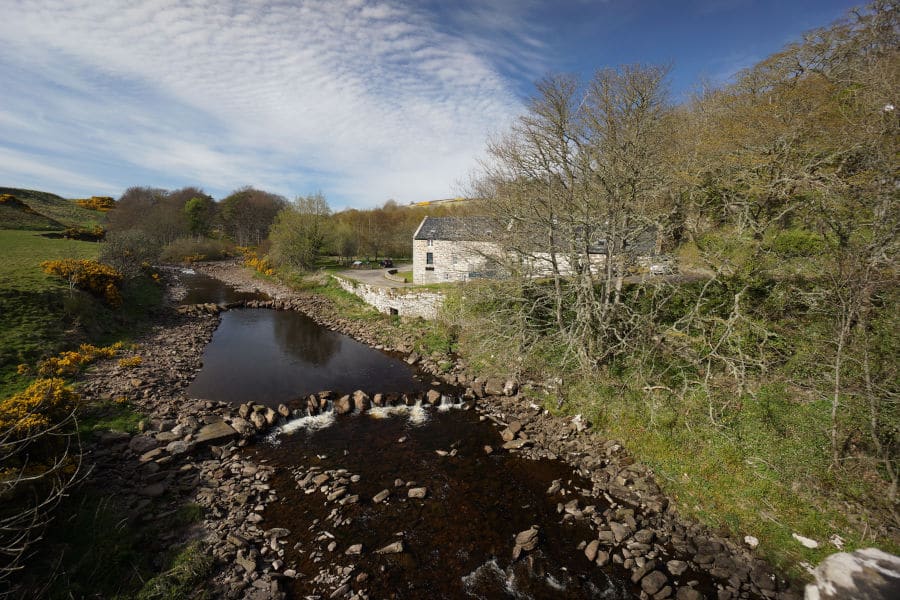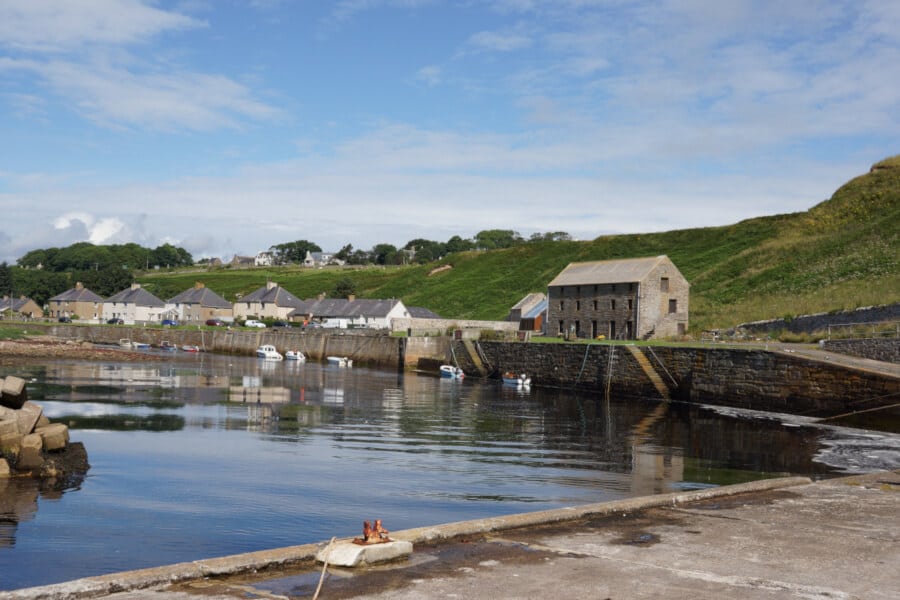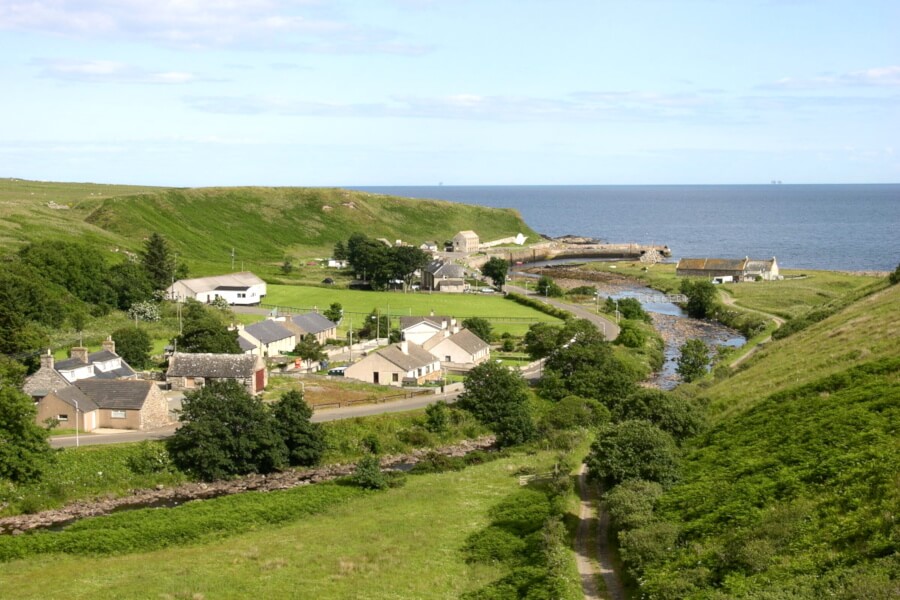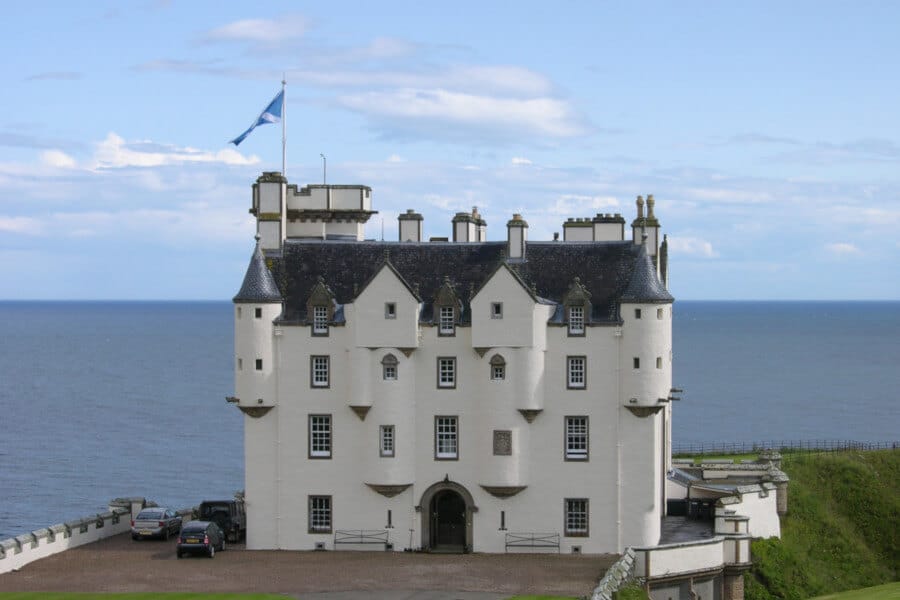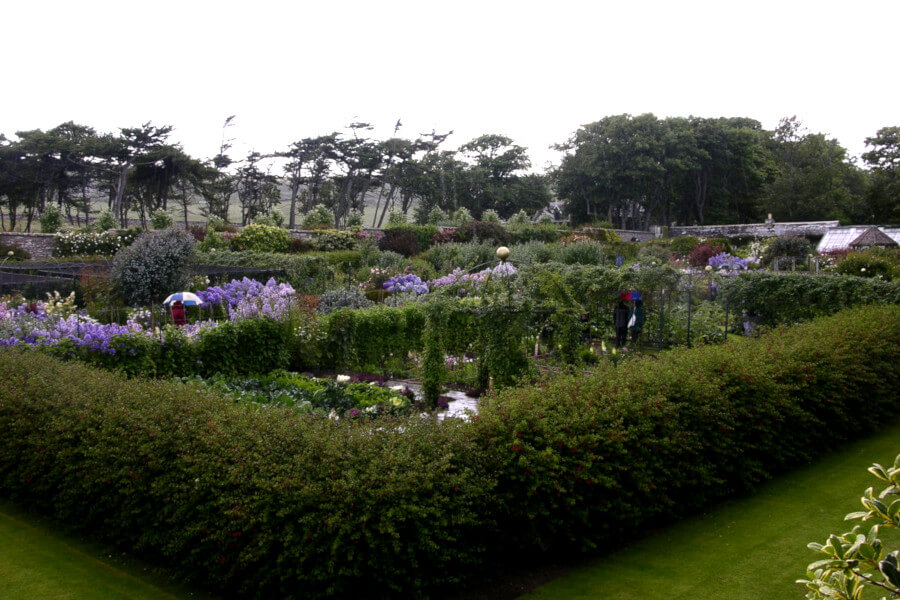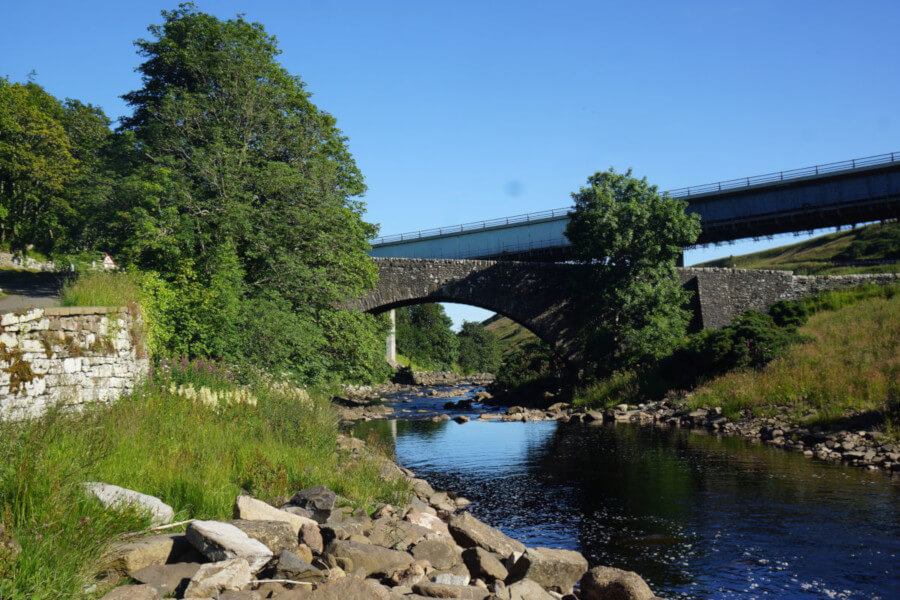About Dunbeath
A small village on the East coast of Caithness, Dunbeath is on the most North-Eastern part of the North Coast 500 Scenic Route. People have been settling here since neolithic times, and evidence of their way of life through the ages, remains written into the landscape.
The village and local area boasts a wealth of things to see and do. From exploring its rich archaeological landscape, visiting the Dunbeath Heritage Centre to find out about the areas natural and cultural heritage, strolling through the stunning Castle gardens, or taking a walk through beautiful birch and hazel woodland to enjoy the breathtaking scenery and spot the local wildlife, Dunbeath has something for everyone.
A Walk through Time: Dunbeath Strath Walk
Following Dunbeath Water as it cuts its way down through the iconic Flow Country from its source in Loch Braigh na h-
The start of the Strath walk is marked by a stone arched bridge built by Thomas Telford between 1809 – 1813, and a renovated meal mill, dating back to around the 1830’s and which was still in use until 1950.
Further up the path, you will pass Chapel Hill, the site of a medieval monastery, and after crossing the footbridge over the Houstry burn, you will reach an iron age broch that is one of the best examples of a broch site in Caithness.
For nature lovers, there is plenty to enjoy. Passing through beautiful woodland of silver birch and hazel, the bracken and stark yellow gorse provides a haven for small birds and other wildlife, and an abundance of wildflowers in the Spring and Summer months bring a burst of color.
A typical Highland spate river, Dunbeath Water still attracts Atlantic salmon that make their way from the sea upstream to spawning grounds between March and October.
Beyond the woods, the path opens up to a view of the steep craggy gorge known as Prisoner’s leap, and for the more adventurous, the walk can continue up the slope and along the track to the white walled cemetery of Tutnaguail.
On the nearby hill of Cnoc na Maranaich is the site of a neolithic quarry and on reaching the summit, there is a standing stone and chambered burial cairn. The remains of other neolithic cairns can be found nearby including Carn Liath and Loedebest East and West, and it is likely that more lie undisturbed beneath the peatland, yet to be discovered.
Neil M. Gunn (1891–1973)
The Land and its People
In a visit to the Dunbeath Heritage Centre you will travel back in time to explore the areas rich natural and cultural heritage. The centre provides a focus for the work of the Dunbeath Preservation Trust and exhibits manuscripts, photographs, and cultural artefacts relating to the heritage of Dunbeath and the local area.
The centre also hosts regular events such as art exhibitions, book launches, workshops and talks. The Neil Gunn Society, which merged with Dunbeath Preservation Trust, has a large collection of material relating to Gunn and his work.
Laidhay is a two hundred year old rush thatched Caithness longhouse, and is a typical example of the older style of Caithness croft dwellings. The croft museum incorporates the modified longhouse of the main building – the dwelling, with the stable and byre at each end, the detached barn with the original cruck roof and a cart shed. Visit the museum to see how people lived and worked in this area more than two centuries ago.
Dunbeath Harbour
Dunbeath Harbour, once teeming with people and boats during the herring boom of the early 1800’s, is quieter now, but the nearby fisherman’s bothy and ice-house are remnants of this wealthy and industrious time.
In tribute to the Scottish writer Neil M. Gunn who was born in the village in 1891, a statue depicting Kenn and the Salmon, from the novel ‘Highland River’ can also be seen on the harbour wall. Penning more than twenty novels over the course of his literary career, Highland life was at the heart of Gunn’s work and the local area served as inspiration for much of his writing.
At the small sandy beach, the brave can take a dip or you can explore the rock pools and keep a look out for puffins and other sea birds, grey seals, and the occasional pod of passing dolphins.
Dunbeath Castle & Gardens
A walk along the pebble beach opposite the harbour provides stunning views of Dunbeath Castle, precariously perched on the ragged clifftops, and the opportunity to catch a glimpse of the wreck site of the SS Gretafield, an oil tanker that was torpedoed off Wick during the second World War and came to rest in the Bay.
Although most of the current castle was built in the 17th Century, there is record of a castle standing here since the 1400’s. It is a private residence now but the gardens, which boast over 1,600 plant varieties and is reputed as one of the finest gardens in Scotland, can be visited in the Summer.
There are two walled gardens, created when the architect David Bryce put in the existing dramatic driveway to the Castle, and in 1999, the Southern Garden was remodelled by Xa Tollemache – a Chelsea Garden Gold Award winner.
A Tale of Two Bridges
A description of Dunbeath would be incomplete without mentioning the impressive road bridge that spans across the valley. By the late 1980’s, the road through Dunbeath was one of the last points on the main A9 route where drivers were at the mercy of the landscape and an infrastructure built for earlier times. Navigating a long descent and re-ascent of the valley and several hairpin bends to cross over the narrow Telford single span stone bridge over Dunbeath Water at the valley floor, slowed journey times considerably, and the increasing volume of traffic was overloading the old bridge that has stood here since the early 1800’s.
Long overdue and only after much controversy, the new bridge was finally completed in 1989. It has five spans, supported by steel girders between paired concrete legs. The gradient of the bridge is steep and built on a curve to fit in with the old alignments of the A9. Telford’s beautiful stone bridge stands beneath it, offering a more peaceful route for walkers and local traffic.

